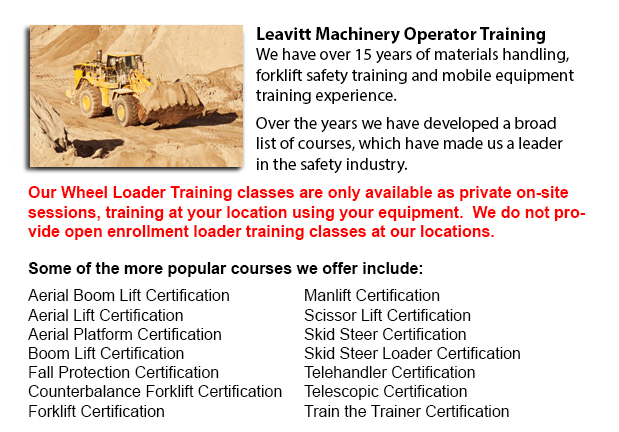
Lift trucks are accessible in several other models that have varying load capacities. Nearly all average forklifts used in warehouse environment have load capacities of 1-5 tons. Larger scale units are used for heavier loads, like loading shipping containers, could have up to 50 tons lift capacity.
The operator could use a control so as to raise and lower the blades, that are also called "tines or forks." The operator could likewise tilt the mast in order to compensate for a heavy load's propensity to angle the forks downward to the ground. Tilt provides an ability to operate on uneven surface as well. There are annual contests intended for skilled forklift operators to contend in timed challenges as well as obstacle courses at local forklift rodeo events.
General utilization
All lift trucks are rated for safety. There is a specific load limit and a specified forward center of gravity. This vital information is supplied by the maker and located on the nameplate. It is vital cargo do not go beyond these specifications. It is illegal in a lot of jurisdictions to interfere with or take out the nameplate without getting consent from the forklift maker.
Most forklifts have rear-wheel steering in order to improve maneuverability within tight cornering conditions and confined spaces. This particular kind of steering differs from a drivers' initial experience with other motor vehicles. In view of the fact that there is no caster action while steering, it is no necessary to apply steering force to be able to maintain a constant rate of turn.
Instability is one more unique characteristic of lift truck utilization. A continuously varying centre of gravity occurs with each and every movement of the load between the lift truck and the load and they must be considered a unit during utilization. A forklift with a raised load has centrifugal and gravitational forces which can converge to lead to a disastrous tipping accident. In order to avoid this from happening, a forklift must never negotiate a turn at speed with its load elevated.
Forklifts are carefully made with a load limit for the forks. This limit is lowered with undercutting of the load, that means the load does not butt against the fork "L," and likewise lessens with blade elevation. Usually, a loading plate to consult for loading reference is situated on the lift truck. It is unsafe to use a forklift as a worker hoist without first fitting it with certain safety tools like for example a "cherry picker" or "cage."
Lift truck utilize in distribution centers and warehouses
Important for every warehouse or distribution center, the lift truck must have a safe setting in which to accommodate their efficient and safe movement. With Drive-In/Drive-Thru Racking, a lift truck needs to travel in a storage bay which is multiple pallet positions deep to set down or obtain a pallet. Operators are usually guided into the bay through rails on the floor and the pallet is located on cantilevered arms or rails. These tight manoeuvres require expert operators to carry out the job safely and efficiently. Since every pallet needs the truck to go in the storage structure, damage done here is more frequent than with various types of storage. If designing a drive-in system, considering the dimensions of the blade truck, together with overall width and mast width, have to be well thought out to ensure all aspects of a safe and effective storage facility.
-
Calgary Crane Ticket
Calgary Crane Ticket - Modern cranes can either be simple or complex, based upon the nature of the use they could perform. For example, mobile cranes are rather simple units. A telescopic boom and even a steel truss mounts its movable platform. A sys... More -
Calgary Forklift Operator Certification
Calgary Forklift Operator Certification - Forklift operator certification is usually needed for employees working in construction, warehouse or industrial environments to ensure the safe operation of forklifts. Workplace training must follow a method... More -
Calgary Crane Operator Classes
Calgary Crane Operator Classes - For the supervisors and the operators, new and current, the crane operator training course is suitable for all. Course content addresses relevant state, federal and provincial safety regulations. The first part of tra... More -
Calgary Heavy Equipment Training School
Calgary Heavy Equipment Training School - The heavy equipment operator courses will assist the operator in obtaining the necessary knowledge and skills they will need in order to enter the workforce as an entry level operator. In this 12 week course... More -
Calgary Scissor Lift Operator Certification
Calgary Scissor Lift Operator Certification - Regulations within North America normally suggest that operators of booms, scissor lifts or aerial work platforms all acquire operator certification. Scissor lift operator certification is not mandatory,... More -
Calgary Aerial Boom Lift Training
Calgary Aerial Boom Lift Training - For people who operate or supervise the utilization of aerial lift platforms, right aerial boom lift Training is required. The aerial lift platform is used for lifting individuals, tools and materials to elevated w... More -
Crane Certification - Overhead Crane, Self-Erect Crane, Truck Mounted Crane, Hydraulic Cranes Certification in Calgary
Overhead cranes are otherwise called bridge cranes. They are a kind of crane that consists of a hook and line mechanism that runs along a horizontal beam which runs along two widely separated rails. Various overhead cranes could be seen inside a long... More -
Calgary Loader Operator Certification
Calgary Loader Operator Certification - Why You Need to Obtain A Loader Operator Certification - Certification for forklifts are required to ensure the safe utilization of forklifts for those employers in industrial, warehouse or construction setting... More

Forklift Certification Calgary
TOLL FREE: 1-888-254-6157
11330 - 70th Street, SE
Calgary, Alberta
forkliftcertificationcalgary.com
Email Us
About Us



